Prabhupada’s Vision for New Vrindaban: Spiritual Education
“To systematically propagate spiritual knowledge to society at large and to educate all people in the techniques of spiritual life in order to check the imbalance of values in life and to achieve real unity and peace in the world.” Srila Prabhupada, Seven Purposes of ISKCON, 1966.
Click here to read the other purposes at the ISKCON.org website.
Prabhupada’s Vision for New Vrindaban: Community Outreach
“I am sure this Prasadam attraction will make our neighbors friendly and surely they will come in number in future so that New Vrindaban will be ideal place for visiting from the neighboring provinces [&] counties.” – Srila Prabhupada, 1968.
Click here to read the rest of the letter at the Vanipedia website.
A Special Palace Renovation in New Vrindaban
Palace Renovation
By Nityodita das
Recently there was a flurry of pictures online of the Grand Opening of Srila Prabhupada’s Palace, 1979. The memories evoked from those photos reminded me of the wonderful years spent rendering concrete service (pun intended) there and the community momentum that was built alongside its construction.
In 1980, I, along with several devotees were interviewed by BTG magazine and they quoted me as saying that my experience was that building the Palace actually built us into devotees! It was way more than a construction project, it was devotional training in the art of offering love to guru and Krsna!
Now that the Palace is undergoing major renovation work by hired professionals , I was contemplating how to generate, at least in my own heart, a revival of the original enthusiasm of those special days leading up to and immediately following the several years of grand festivals at the Palace.
As I was praying, a tiny group of devotees, Trevor, Kalpa, Daivata were pulling me with their invitations to the Palace to attend Prabhupada’s Mangal arotik at 6am. I was torn, as that was my japa time. But after a few days, I agreed to go…just one day….just to “encourage” them. Lol
But what happened though was truly amazing! Although, there was only a handful of us, the transcendental acoustics generated by the enthusiastic singing of Samsara Davanala Lidha Loka……in the temple room somehow super amplified our voices and I had to look up towards the dome to make sure I wasn’t missing the presence of any demigods singing! The intimacy I felt between us kirtaneers, who were chanting and dancing with abandon, seemed like something out of Chaitanya lila. This heart to heart feeling was enhanced by Prabhupada’s powerful presence magnified by the compactness of the sacred space of his gold and marbled temple room.
This Kirtan transported me back to a place of intense joy and service, the Grand Opening………..of the heart. This renovation is universal! It is available for all! No previous experience necessary, no resumés required! The only tools needed are your hands for clapping or making music, legs for dancing and voice for singing! No professional chanters needed!
Now, I regularly attend Prabhupada’s Mangala arotik every day that I am at New Vrindaban, have made it a regular part of my sadhana and am humbly inviting everyone to help renovate Prabhupada’s Palace!
Proposal for New Playground at New Vrindaban’s Home School Co-op
by Vidya dasi
Wouldn’t it be nice to fix up the play ground at the New Vrindaban Home School Co-op, Gopal’s Garden?
Wish they would do that!
Wait! Who’s “they”?
It’s me! Us! What could I do? Well I’ve been part of some great projects in the past at New Vrindaban. Why not try something else? So, for 2015, I am making this playground improvement my service. If you have ideas for this, or would like to help, please let me know. I already have some things we can use. Plus, the added attraction is that Ruci is cheering me on!
See the link below for a great sand box for the school.
Vidya 304 845 5416
New Vrindaban Celebrates Lord Nityananda’s Appearance Day
New Vrindaban started the New Year with a colorful, lively, family-friendly Nityananda Trayodasi celebration on Sunday Feb. 1. Snow covered the ground all over New Vrindaban, but that didn’t stop many devotees from bundling up and carefully driving down to the temple for bhajans at 10:30 Sunday morning.
The sweet sounds of Nityananda bhajans – “Boro sukher kabor gai” and “Akrodha paramananda nityananda raya” and others – filled the air, serenading the Deities and devotees. Then at 12 noon, the big, wooden Deity doors rumbled open to reveal Their Lordships, small Sri Sri Gaura Nitai, standing gracefully on a small podium, ready for Their abhishek. Everyone was amazed, watching the thick, syrupy honey poured luxuriously over Their Lordships’ forms, followed by yogurt, water, and other auspicious liquids infused with all sorts of sweet-smelling oils. It was a treat for the eyes and heart.
During the Lord’s arotik, a mellow kirtan was led by some of New Vrindaban’s most melodious singers.
Then, the devotees listened with rapt attention to His Holiness Varsana Maharaj relating intimate pastimes of Lord Nityananda and His associates, narrated with great love, as Maharaj always does.
All of these festivities culminated in a well-attended and sumptuous feast in honor of Lord Nityananda, the one whose name means “eternally blissful”; the one who is the elder brother of Lord Caitanya; the one who is an avadhuta not bound by any social customs; and the one without whose mercy no-one can understand Lord Caitanya Mahaprabhu.
The Bhagavat Dharma Experience: Prabhupada’s Second Visit to New Vrindaban – 1972
Written by Madhava Smullen. Archival Research by Chaitanya Mangala.
New Vrindaban, August 31st, 1972 – Just as he had three years prior in 1969, Srila Prabhupada arrived at New Vrindaban in a black Lincoln Continental, winding down the country road towards the excited group of waiting devotees.
But this time, the group was much larger, belting out a joyous kirtan, and standing in front of a new converted farmhouse temple. During Prabhupada’s last visit, there had only been the original Vrindaban farm and a few dozen close followers. Now, New Vrindaban had expanded to several farms including this main one, Bahulaban, presided over by Sri-Sri Radha-Vrindabanchandra.
As Srila Prabhupada stepped out of his car, the devotees hit the ground in exuberant prostration. They pressed around him as he walked in his regal manner across the lawn and sat on a red-velvet vyasasana strewn with garlands and surrounded by a forest of Tulasi plants.
Thanking the devotees for all the hard work they had done to organize the upcoming festival, Prabhupada introduced the concept of the Bhagavat Dharma Discourses he was to hold at New Vrindaban. The event, where he would speak for over a week on the Bhagavatam, was to be one in a series that was already attracting thousands in cities throughout India.
“Just try to hear about Krishna,” he said. “Your life will be successful…. This is called bhagavat-dharma.”
After his talk, Prabhupada rode to an old farmhouse at Madhuban two miles away, where he would stay during his visit. He was clearly pleased to be back at New Vrindaban. “This Vrindaban, that Vrindavan, no difference,” he said.
The festival began the next morning. Over 500 devotees, guests and reporters had flooded in from all over the US for the biggest public event ISKCON had seen so far.
They all had to brave the austere weather and conditions of West Virginia mountain country. With no guesthouse, vans and tents dotted the hillside. During the festival heavy rain fell, chilling campers to the bone and turning Bahulaban into a sea of mud. In the mornings, devotees found their way through the dark to “the Ghat,” a cold, muddy pool next to the cowshed to bathe. Drinking water was hauled from a well. And cooking was done outside on makeshift stoves.
But devotees faced the hardships with good humor and comraderie, nicknaming Bahulaban “Mudsville” after the local town of Moundsville, and enjoying working with godbrothers and godsisters from all over the country. They were prepared to encounter any austerity for Prabhupada’s association. And Prabhupada himself didn’t mind the lack of facilities (his quarters had no running water). He was just happy to absorb the simple mood of New Vrindaban.
At 7:00am on September 1st – Janmastami Day – he walked the dirt road up “Govardhana Hill” with his entourage to give his first Discourse. The hill overlooked Bahulaban and provided views of densely wooded mountains fading off into the mists at every turn. At the top was the large open-air pavilion devotees had built themselves to accommodate all the visitors.
As a crowd of devotees and guests greeted him with loud kirtan, Prabhupada ascended a stage that stretched across one entire end of the pavilion and sat on his vyasasana. To his right, against a dramatic red backdrop, was a lifesize painting of Chaitanya Mahaprabhu. To his left were Deities of Sri Sri Radha Damodara and Lord Jagannath. Flags and streamers hung everywhere.
Prabhupada spoke powerfully about the purifying nature of Krishna conscious sound vibration, the always blissful nature of God, or Bhagavan, and our relationship to Him – Bhagavat-Dharma.
Later, he inaugurated the beautiful new marble-floored temple room at Bahulaban, and presided over a large initiation ceremony at which many candidates from across the country received new names.
In the evening, after arati, came an experience many would still remember decades later. As devotees packed tightly into the temple room, Prabhupada had some of the sannyasis read aloud from Krishna book. After the entire introduction and first chapter on Lord Krishna’s advent, they thought it might be time to stop. But Prabhupada indicated that they should continue.
As they read on for hours, the exhausted devotees, famished from fasting all day and crammed into the sauna-like temple room, struggled to stay attentive to the weighty philosophy of “Prayers by the Demigods for Lord Krishna in the Womb.” Gradually, everyone began nodding off. A comical scene ensued as the dandas of sleepy sannyasis fell, crossing like swords across the aisle and then bobbing up as their owners jerked themselves awake.
Only Srila Prabhupada listened attentively, relishing Krishna’s pastimes. At last, well after midnight, he smiled. “I think you have had enough. Take prasadam. You are a little tired.”
Despite their exhaustion, after arati and the feast at 1:00am, many devotees stayed up through the night to chant their rounds and make sure they didn’t miss mangala arati the next day. For it was a most auspicious event — Srila Prabhupada’s seventy-sixth appearance day.
The next morning was beautiful and sunny as Prabhupada emerged from his car in front of the pavilion in his saffron robes and fresh, perfectly applied tilak. A sense of purity emanated from him, an otherworldly quality that stood out against the old car, as if he were from another age.
“When Prabhupada looked out of the Volkswagen, which was being driven by Hayagriva, he smiled like I’ve never seen him smile — except in that picture in the Lilamrita when Brij stood up for the first time and he was just beaming,” recalls Varshana Swami. “As Sally Agarwal described it, that oceanic smile.”
Showers of flowers rained on Prabhupada as he entered the pavilion. Devotees chanted his pranam mantra at the tops of their lungs and hit the ground before him. Some smiled fondly at him; some seemed awestruck. All adored him. But Prabhupada didn’t play to the crowd as he made his way through it. He simply walked quietly to the stage, folded his palms before the Deites, and offered his obesiances to Them.
As he ascended his vyasasana to address the packed audience of devotees, guests, scholars, local politicians and reporters, he expressed that he didn’t want them to think he was receving all this adoration for himself. “It may be misunderstood,” he said. “An outsider may see that “Why a person is being worshipped like God?’ There may be some doubt.”
The name “Vyasa Puja,” he explained, comes from Vyasadeva, the incarnation of Lord Narayan and original author of all Vedic literature. Because the spiritual master passes this knowledge originating from the Lord through disciplic succession without change, he is offered respect once a year on his birthday.
Prabhupada emphasized that just as the viceroy of the king may accept valuable jewels and gifts on behalf of the king, similarly the spiritual master “receives all honor… on behalf of the Supreme Personality of Godhead, not for his person.”
After Prabhupada’s talk, devotees ascended the stage one by one to offer flowers and obeisances and read out literary offerings. With such a crowd, not many got the chance – Silavati Dasi, an authority on Deity worship, was notably the only woman to make an individual offering, personally invited by Srila Prabhupada.
Bharadraja Das then began the Gurvastakam prayers. Hundreds rose to chant and dance, as Prabhupada looked on from his vyasasana and played kartalas.
As the kirtan began to get more lively, Vishnujana Swami took over the lead, playing mridanga right in front of Prabhupada. He sang with feeling, building the kirtan in intensity. In response, Prabhupada closed his eyes and began first to rock his head from side to side, then his whole body, his eyes tightly closed as he crashed his kartals together with more and more force.
Vishnujana’s kirtan reached a crescendo, and at last, as Radhanath Swami recalls, “It appeared that Prabhupada could not contain himself.” Overwhelmed with love for Krishna and the devotees, he took over the lead, calling out the Lord’s names in a strong voice.
The crowd went mad. Devotees rushed the stage, and a thousand arms reached out towards Prabhupada. Srila Prabhupada began to cry, chanting through his tears. The devotees were swept up in his rare exhibition of spiritual emotion. A wave of love of Godhead hit them and they cried openly too, crushing the stage with total abandon and roaring out the Holy Names.
“Srila Prabhupada’s chanting was so beautiful, it was almost like the sky opened up, love of God came down and it poured over all of us,” recalls Satyanarayan Das. “I’ve never been to a kirtan like that before in my life and never since… It was a divine experience.”
After the kirtan, as everyone sat stunned, a group of devotees staggered up the hill carrying an enormous birthday cake baked by Gayatri Dasi. Srila Prabhupada took a tiny morsel and nodded his approval, then left to go back to his quarters at Madhuban. The devotees, wide-eyed, looked at each other. It was maha-prasada!
In one surging mass, everyone dove at the cake, all wanting a piece of Prabhupada’s mercy. Some playfully attacked each other for a piece. Others rolled the cake through the crowd as devotees grabbed huge handfuls and stuffed it into their mouths. Some, in bliss, ran down the hill offering cake to astonished guests. “Here, this is Prabhupada’s cake!”
“The cake was completely demolished, within minutes, in a frenzy,” Gokularanjana Das recalls. “In retrospect, it was offensive, but at the time it was like spontaneous devotion.”
Later that evening, Vishnujana performed several selections from the Radha-Damodara Traveling Sankirtan Party’s Transcendental Rock Opera, then launched into another ecstatic kirtan. As darkness fell, the local devotees built a bonfire, and everyone sat around it, watching the flickering flames as they took turns reading about Lord Chaitanya’s pastimes.
The Bhagavat Dharma discourses continued for another week, with Srila Prabhupada carried royally by palanquin to the pavilion and back to the temple every evening, surrounded by an ocean of devotees carrying torches, lanterns, and flashlights and chanting uproariously.
“In each successive Discourse, Prabhupada took the devotees deeper and deeper into the meaning of Srimad-Bhagavatam,” recalls Suhotra Swami. “It was a perfect outline… Every devotee should study these lectures to study the logic of the Bhagavat philosophy, to see how every element of the philosophy is fundamentally connected to all other elements.”
Meanwhile, Prabhupada wrote to his disciples elsewhere in the world expressing his appreciation of the festival. “The Bhagavata Dharma discourses here in New Vrindaban are going on very nicely, and daily several hundred devotees and guests are coming to hear, and it is truly a wonderful time,” he wrote to Radha Damodar Das. And to Brahmananda, he wrote, “Now go on holding [these] Bhagavata Dharma discourses in every city of the world.”
At last, on September 10th, the festival came to an end, and on September 11th, Srila Prabhupada departed, leaving the New Vrindaban devotees feeling satisfied and energized.
“[At the festival we had] the feeling that we were a family and there was Srila Prabhupada, he was our father,” recalls Krishna Kumari Dasi. “We all felt sheltered, we all felt protected. It was like a resurgence of energy and rededication. We all went back to our temples completely refreshed and rejuvenated and ready for whatever austerities we had to perform.”
Eco Village / Plain Living and High Thinking
Eco Village / Plain Living and High Thinking
by Vyasasana dasa
There has been an ongoing discussion here at New Vrindaban about the possibility of establishing a Vedic or Eco Village, where people would be able to live simply, and practice Krishna Consciousness. Establishing cottage industries based on agriculture, dairy, arts and crafts, etc., and living a more earth based lifestyle
A few day ago my wife shared a link with me on Facebook describing an earth friendly, hand built house, built by Michael Buck, for practically nothing! As I have myself been a builder for almost 40 years now, as as we have been discussing the idea of an Eco Village here at New Vrindaban, I was of course interested. This is a nice example of a house that could easily be built with materials that are local to our area, using the ancient technique of cob – building with a mixture of sand, clay, straw, water and earth.
The following is the text and images as it appears on the English web site Daily Mail.
It looks like something straight out of Middle Earth – and the story behind it is almost as fantastical.
This cottage cost just £150 to build, using only natural or reclaimed materials, and is now rented out for a fee of fresh milk and cream.
And with no mains electricity, gas or water, the bills don’t come to much either.
Smallholder Michael Buck spent eight months constructing the house using the ancient technique of cob – building with a mixture of sand, clay, straw, water and earth. He taught himself the method by reading a book, even shaping the walls without a single power tool.
He also made the simple wooden roof frame and thatched it himself with straw from his fields.
The 300 sq ft of floor space features floorboards rescued from a skip, while an old windscreen from a lorry provided glass for the windows.
With no central heating, you might think it would be a bit chilly, but he says the cob walls and thatched roof make it incredibly well insulated – and the ceiling is stuffed with sheep’s wool from a nearby farm to help keep the heat in further.
Despite the somewhat Spartan arrangements, Mr Buck is renting out the unusual property. But there isn’t a hobbit in sight – and the current tenant is a worker on a neighbouring dairy farm who pays for her lodgings in milk and cream. Cooking can be done on the woodburner, but she has installed a small gas stove in the kitchenette.
Yesterday father of three Mr Buck, 59, who lives in a more conventional home nearby with wife Sheila, 57, said: ‘I wanted to show that houses don’t have to cost anything. We live in a society where we spend our lives paying our mortgages, which many people don’t enjoy.’
Mr Buck originally aimed to build the house for nothing, but miscalculated the amount of straw needed so had to buy more. He also had to buy nails to keep the thatch attached. Friends pitched in to help with the build and their names are written on the wall, along with the names of three cows – Marigold, Crystal and Mist – whose dung was used to make plaster.
Mr Buck, a former art teacher, drew the plans for the house on the back of an envelope and did not need planning permission as it was classed as a summer house.
Simple Living High Thinking
In the Srimad Bhagavatam we find in one purport where it is described:
… Another feature of the devotee is nir?hay?, simple living. Nir?h? means “gentle,” “meek” or “simple.” A devotee should not live very gorgeously and imitate a materialistic person. Plain living and high thinking are recommended for a devotee. (Srimad Bhagavatam 4.22.24)
Srimad Bhagavatam
By His Divine Grace A. C. Bhaktivedanta Swami Prabhupada
Canto Four, Chapter 22, Text 22
ahi?say? p?ramaha?sya-caryay?
sm?ty? mukund?carit?grya-s?dhun?
yamair ak?mair niyamai? c?py aninday?
nir?hay? dvandva-titik?ay? ca
ahi?say?—by nonviolence; p?ramaha?sya-caryay?—by following in the footsteps of great ?c?ryas; sm?ty?—by remembering; mukunda—the Supreme Personality of Godhead; ?carita-agrya—simply preaching His activities; s?dhun?—by the nectar; yamai?—by following regulative principles; ak?mai?—without material desires; niyamai?—by strictly following the rules and regulations; ca—also; api—certainly; aninday?—without blaspheming; nir?hay?—living simply, plain living; dvandva—duality; titik?ay?—by tolerance; ca—and.
TRANSLATION
A candidate for spiritual advancement must be nonviolent, must follow in the footsteps of great ?c?ryas, must always remember the nectar of the pastimes of the Supreme Personality of Godhead, must follow the regulative principles without material desire and, while following the regulative principles, should not blaspheme others. A devotee should lead a very simple life and not be disturbed by the duality of opposing elements. He should learn to tolerate them.
PURPORT
The devotees are actually saintly persons, or s?dhus. The first qualification of a s?dhu, or devotee, is ahi?s?, or nonviolence. Persons interested in the path of devotional service, or in going back home, back to Godhead, must first practice ahi?s?, or nonviolence. A s?dhu is described as titik?ava? k?ru?ik?? (Bh?g. 3.25.21). A devotee should be tolerant and should be very much compassionate toward others. For example, if he suffers personal injury, he should tolerate it, but if someone else suffers injury, the devotee need not tolerate it. The whole world is full of violence, and a devotee’s first business is to stop this violence, including the unnecessary slaughter of animals. A devotee is the friend not only of human society but of all living entities, for he sees all living entities as sons of the Supreme Personality of Godhead. He does not claim himself to be the only son of God and allow all others to be killed, thinking that they have no soul. This kind of philosophy is never advocated by a pure devotee of the Lord. Suh?da? sarva-dehin?m: a true devotee is the friend of all living entities. K???a claims in Bhagavad-g?t? to be the father of all species of living entities; consequently the devotee of K???a is always a friend of all. This is called ahi?s?. Such nonviolence can be practiced only when we follow in the footsteps of great ?c?ryas. Therefore, according to our Vai??ava philosophy, we have to follow the great ?c?ryas of the four samprad?yas, or disciplic successions.
Trying to advance in spiritual life outside the disciplic succession is simply ludicrous. It is said, therefore, ?c?ryav?n puru?o veda: one who follows the disciplic succession of ?c?ryas knows things as they are (Ch?ndogya Upani?ad 6.14.2). Tad-vijñ?n?rtha? sa gurum ev?bhigacchet:
tad-vijñ?n?rtha? sa gurum ev?bhigacchet
samit-p??i? ?rotriya? brahma-ni??ham
“To understand these things properly, one must humbly approach, with firewood in hand, a spiritual master who is learned in the Vedas and firmly devoted to the Absolute Truth.”
In order to understand the transcendental science, one must approach the bona fide spiritual master. The word sm?ty? is very important in spiritual life. Sm?ty? means remembering K???a always. Life should be molded in such a way that one cannot remain alone without thinking of K???a. We should live in K???a so that while eating, sleeping, walking and working we remain only in K???a. Our K???a consciousness society recommends that we arrange our living so that we can remember K???a. In our ISKCON society the devotees, while engaged in making Spiritual Sky incense, are also hearing about the glories of K???a or His devotees. The ??stra recommends, smartavya? satata? vi??u?: Lord Vi??u should be remembered always, constantly. Vismartavyo na j?tucit: Vi??u should never be forgotten. That is the spiritual way of life. Sm?ty?. This remembrance of the Lord can be continued if we hear about Him constantly. It is therefore recommended in this verse: mukund?carit?grya-s?dhun?. S?dhu means “nectar.” To hear about K???a from ?r?mad-Bh?gavatam or Bhagavad-g?t? or similar authentic literature is to live in K???a consciousness. Such concentration in K???a consciousness can be achieved by persons who are strictly following the rules and regulative principles. We have recommended in our K???a consciousness movement that a devotee chant sixteen rounds on beads daily and follow the regulative principles. That will help the devotee be fixed in his spiritual advancement in life.
It is also stated in this verse that one can advance by controlling the senses (yamai?). By controlling the senses, one can become a sv?m? or gosv?m?. One who is therefore enjoying this supertitle, sv?m? or gosv?m?, must be very strict in controlling his senses. Indeed, he must be master of his senses. This is possible when one does not desire any material sense gratification. If, by chance, the senses want to work independently, he must control them. If we simply practice avoiding material sense gratification, controlling the senses is automatically achieved.
Another important point mentioned in this connection is aninday?—we should not criticize others’ methods of religion. There are different types of religious systems operating under different qualities of material nature. Those operating in the modes of ignorance and passion cannot be as perfect as that system in the mode of goodness. In Bhagavad-g?t? everything has been divided into three qualitative divisions; therefore religious systems are similarly categorized. When people are mostly under the modes of passion and ignorance, their system of religion will be of the same quality. A devotee, instead of criticizing such systems, will encourage the followers to stick to their principles so that gradually they can come to the platform of religion in goodness. Simply by criticizing them, a devotee’s mind will be agitated. Thus a devotee should tolerate and learn to stop agitation.
Another feature of the devotee is nir?hay?, simple living. Nir?h? means “gentle,” “meek” or “simple.” A devotee should not live very gorgeously and imitate a materialistic person. Plain living and high thinking are recommended for a devotee. He should accept only so much as he needs to keep the material body fit for the execution of devotional service. He should not eat or sleep more than is required. Simply eating for living, and not living for eating, and sleeping only six to seven hours a day are principles to be followed by devotees. As long as the body is there it is subjected to the influence of climatic changes, disease and natural disturbances, the threefold miseries of material existence. We cannot avoid them. Sometimes we receive letters from neophyte devotees questioning why they have fallen sick, although pursuing K???a consciousness. They should learn from this verse that they have to become tolerant (dvandva-titik?ay?). This is the world of duality. One should not think that because he has fallen sick he has fallen from K???a consciousness. K???a consciousness can continue without impediment from any material opposition. Lord ?r? K???a therefore advises in Bhagavad-g?t? (2.14), t??s titik?asva bh?rata: “My dear Arjuna, please try to tolerate all these disturbances. Be fixed in your K???a conscious activities.”
Salagram-Sila appears at New Vrindaban
Salagram-Sila appears at New Vrindaban
by Henry Doktorski (Hrishikesh dasa)
During May 1977, the first Salagram-Sila appeared at New Vrindaban. Salagram-Sila is a Vaisnava murti in the form of a spherical, usually black-colored stone found in the sacred river Gandaki, a tributary of the Ganges and one of the major rivers of Nepal and India. Geologists believe the river is older than the Himalayas; as tectonic activity forced the mountains higher, the river has cut through the uplift to maintain its course.
Salagram-Sila stones are naturally formed, with circular or spiral markings and are found in particular kinds of ocean sediments, which have been uplifted to the top of the Himalayas. The word Sila translates simply to “stone” and Salagram is a name of Visnu. The origin of the name is traced to a remote village in Nepal where Visnu is known by the name of Salagraman.
The Silas are worshipped as manifestations of Visnu Himself, identifiable from other stones by special markings believed to resemble Visnu’s paraphernalia such as mace, conch, lotus and disc. Nrsimhadeva, Varahadeva and Vamanadeva are popular forms of worship. They are either black, red, or mixed in color and are usually kept closed in a box and are only brought out for daily worship (puja). Traditionally Silas are acquired by heredity and are passed down through many generations, never being purchased or sold.
According to Vaisnava belief, the worshipper of a Salagram-Sila must adhere to strict rules, such as not touching the Salagram without bathing, never placing the Salagram on the ground, eating only prasadam, and not indulging in bad practices.
The [June 1977 issue of the] Brijabasi Spirit reported about the acquisition of the silas for New Vrindaban:
More than a year ago, we read in Caitanya-Caritamrita that Srila Prabhupada desired to introduce Salagram-Sila worship in the West. He said at the time this worship of Salagram was not going on, but that soon it would be established as a regular function of every ISKCON temple. Last month in New Vrindaban, Prabhupada’s desire became manifest as Salagram-Sila appeared on the altar of Sri Sri Radha-Vrindaban Candra.
All the members of the community were very much excited about the Lord’s arrival. When He appeared on the altar for the first time, His smiling face bestowing benedictions upon all His devotees, everyone’s expectations were more than satisfied. The Lord’s beauty is without comparison to anything in the material world. Simply by seeing His transcendental form one loses all desire to see anything else. As stated in the second chapter of Bhagavad-Gita, param drstva nirvartate: by experiencing a higher taste one gives up his attraction for sense objects. . . .
Kirtanananda Maharaja placed Kuladri dasa in charge of serving Salagram, and this has turned out to be a full-time engagement for Kuladri. . . . We have two Salagrams residing on Radha-Vrindaban Candra’s altar, each seated on His own throne. Their characteristics have been identified as being those of Sri Hiranyagarbha and Sri Sudarsana. Unlike the Deity form, in which Krishna enters upon the request of the Acarya, Salagram-Sila is and always was Krishna, with or without installation.
There is a special river high in the Himalayas from which Salagrams appear. One must enter the water and after chanting special mantras one calls loudly the name of the particular Salagram-Sila he desires to worship. Each Salagram-Sila has distinct characteristics identifiable by brahmanas expert in the science. This is the method of acquisition as related to us by one of our senior godbrothers presently residing in India.
The author was a resident of New Vrindaban from 1978 until 1994.
Prabhupada’s Vision for New Vrindaban: A Self-Governing Village
“Go on acquiring the surrounding lands and in this way we will establish a local self-governing village and show all the world a practical example of spiritual life as Krishna Himself exhibited in Vrindaban.” – Srila Prabhupada, 1973.
Click here to read the rest of the letter at the Vanipedia website.
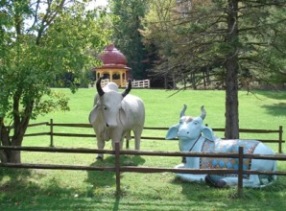
Welcome to Brijabasi Spirit
Thank you for taking the time to visit the New Vrindaban community blog. Think of visiting our blog as making a virtual pilgrimage.
Hare Krishna Hare KrishnaKrishna Krishna Hare Hare
Hare Rama Hare Rama
Rama Rama Hare Hare
"May cows stay in front of me; may cows stay behind me; may cows stay on both sides of me. May I always reside in the midst of cows."
Hari Bhakti-vilas 16.252



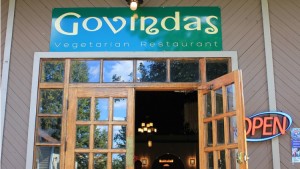



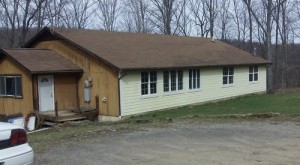
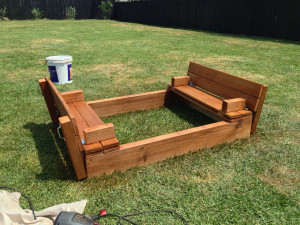
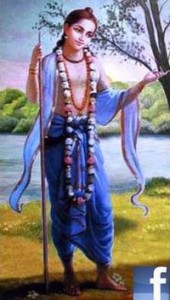
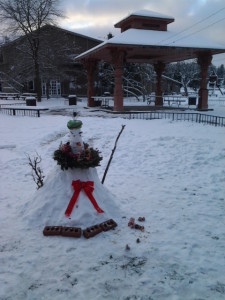
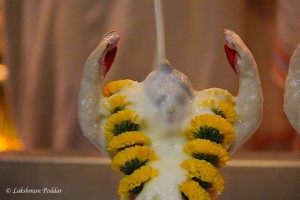
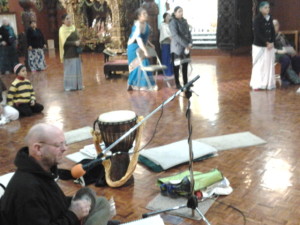
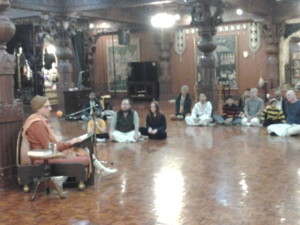
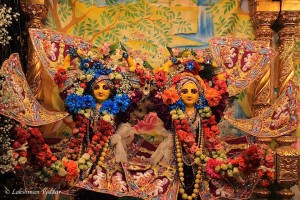
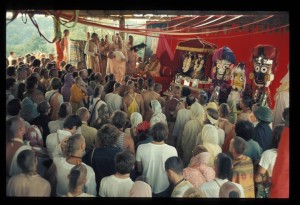
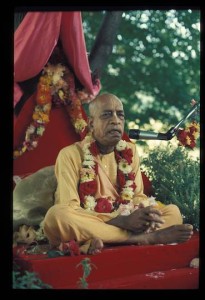
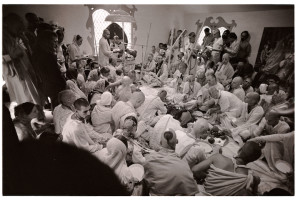
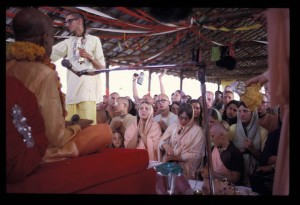
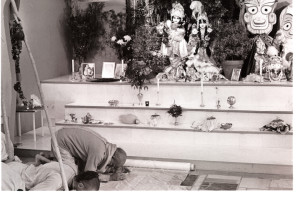






















Recent Comments